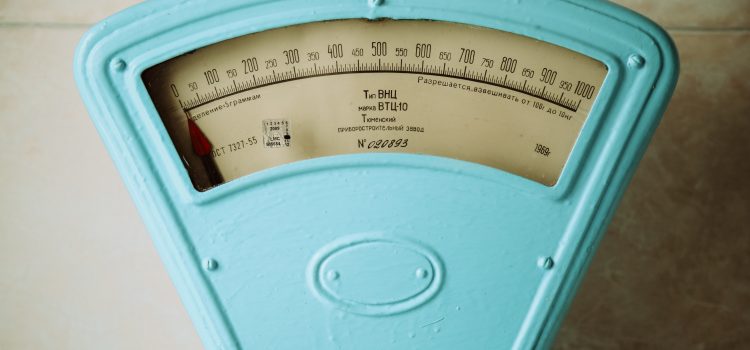
Introduction
Are you tired of focusing solely on the number on the scale to measure your fitness progress? It’s time to shift your mindset and discover alternative ways to track success in your health journey. In this guide, we will explore various methods for measuring fitness without weight, from tracking body measurements to monitoring endurance levels. Say goodbye to stressing over the scale and hello to a more holistic approach towards achieving your health goals. Let’s get started!
What is Fitness Tracking?
Fitness tracking is a great way to keep track of your progress and see changes over time. There are many different types of fitness trackers, so it can be hard to know which one is right for you. Here are some tips on choosing the best one for you:
-Do you want a tracker that will help you lose weight or gain muscle?
-How often do you plan on using the device? Some trackers require daily wear, while others only need occasional use.
-What type of data do you want to keep track of? Most devices have sensors that can track heart rate, steps taken, calories burned, and more.
-Are you interested in competition or just wanting to stay motivated? Many devices have features that allow users to share their results with friends or family.
Once you’ve chosen your tracker, there are a few things you need to do in order to get started using it. Here are some tips:
-Set up your tracker and make sure all the components are working correctly by following the manufacturer’s instructions.
-Configure the device for your personal preferences by adjusting settings such as time zone, notification settings, and privacy settings.
-Create an account with the fitness app that comes bundled with your tracker or download one from the App Store or Google Play store. This will give you access to user forums, support groups, and other resources related to your device.
Once
Types of Fitness Trackers
There are many different types of fitness trackers on the market. Some track steps, some monitor heart rate, and some include both. This guide will help you understand which type of tracker is right for you and how to use it most effectively.
Step Trackers
Step trackers measure the number of steps taken each day. They work well if you want to maintain or improve your overall fitness level without focusing specifically on weight loss or muscle gain. Step trackers usually have an accelerometer so they can detect when you’re walking, running, or climbing stairs. There are also step trackers that measure calories burned, but these are less common.
Heart Rate Monitors
Heart rate monitors measure your heart rate throughout the day and offer a more detailed understanding of your overall fitness level than step trackers do. Heart rate monitors can be used to help manage weight loss or maintain a healthy lifestyle by helping you to identify areas where you need to improve your conditioning. Many heart rate monitors also have features that allow you to monitor your sleep quality and performance metrics such as speed, distance covered, and time spent active in bed.
Dual-Trackers
Dual-trackers combine features from both step trackers and heart rate monitors into one device. This allows them to better assess your overall fitness level by measuring both steps taken and heart rates throughout the day. Dual-tracker devices usually come with an app that allows you to view all of your
How to Track your Progress
When you’re working to improve your fitness, it can be helpful to have a way to measure your progress. Tracking your progress can help you stay on track and see results faster. There are a variety of ways to track your fitness progress, and the method that works best for you is likely personalized based on your individual needs and goals.
Here are five methods for measuring fitness without weight:
1) Step Counting: Step counting is a great way to see overall weekly or monthly progress. Simply take note of how many steps you take each day, week, or month. If you’re working towards a goal such as losing weight or becoming more active, make sure to increase your daily step count gradually over time as this will help minimize any potential injury.
2) Duration of Exercise Sessions: Another great way to track exercise intensity is by recording the duration of each session. While it may be tough at first to time yourself during longer workouts, eventually you’ll get better at it and be able to accurately record how long each workout lasts.
3) Calorie Burning Rate: To calculate calorie burning rates, simply multiply the number of calories expended during an activity by the intensity level of that activity (i.e., moderate vs. vigorous). This information can be useful in determining whether or not an exercise is suitable for your current level of fitness and also assists in setting future exercise goals accordingly.
4) Body Mass Index (B
The Benefits of Fitness Tracking
A regular fitness routine not only keeps your body healthy, it can also help you maintain a healthy weight. Tracking your progress can be motivating and give you the discipline to continue working out even when the scale doesn’t budge. There are many benefits to being fit, but here are five that stand out the most:
1. Increased Strength and Stamina
Working out regularly will not only keep your body toned, but it will also increase your strength and stamina. These abilities can come in handy when performing everyday tasks or running a marathon.
2. Improved Mental Health
Regular exercise has been shown to improve mental health in a number of ways. First, it can boost serotonin levels, which helps improve moods and reduces anxiety. Second, exercise releases endorphins, which have anti-anxiety effects and reduce stress levels. Exercise also increases blood flow to the brain, providing better cognitive performance.
3. Lower Risk for Chronic Diseases
Being physically active has been shown to lower the risk for chronic diseases like heart disease, stroke, and type 2 diabetes. This is partly due to the fact that being physically active promotes better overall health and prevents obesity from developing in the first place.
4. Reduced Body Fat Percentage
Trying to lose weight? Tracking your progress is key! Knowing how much weight you’ve lost (and kept off) gives you more motivation to stick with your diet and workout regimen. Not only do you look better naked
Conclusion
Tracking fitness progress can be a challenge, especially if you do not have access to weight measures. With the right tools and techniques, measuring fitness without weight can be a powerful way to track your overall fitness level and see real-time changes. In this article, we outline some of the best ways to track your fitness without resorting to weighing yourself on a regular basis. Armed with the information in this article, you’ll be able to measure your success in reaching your fitness goals!










